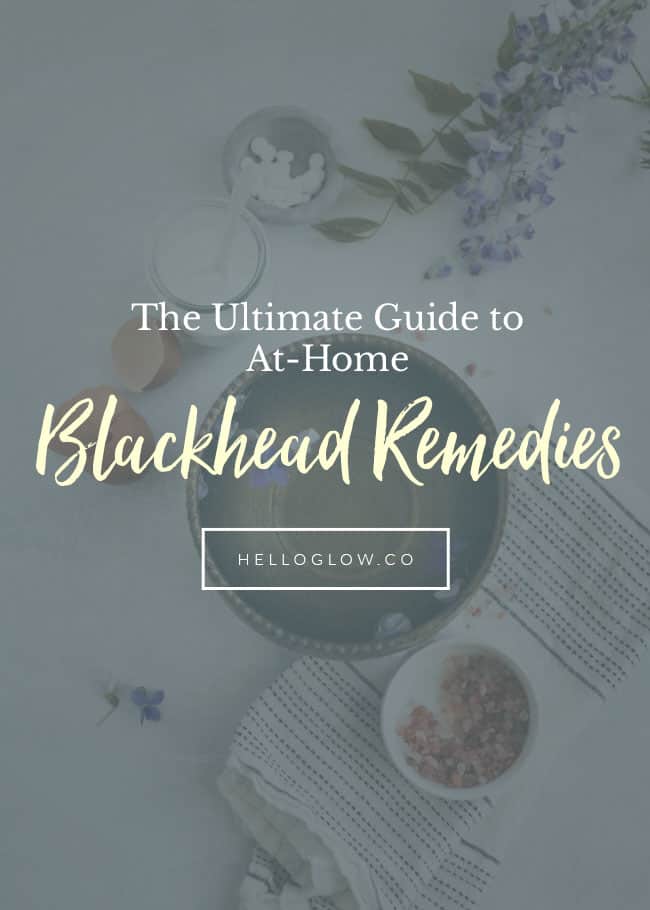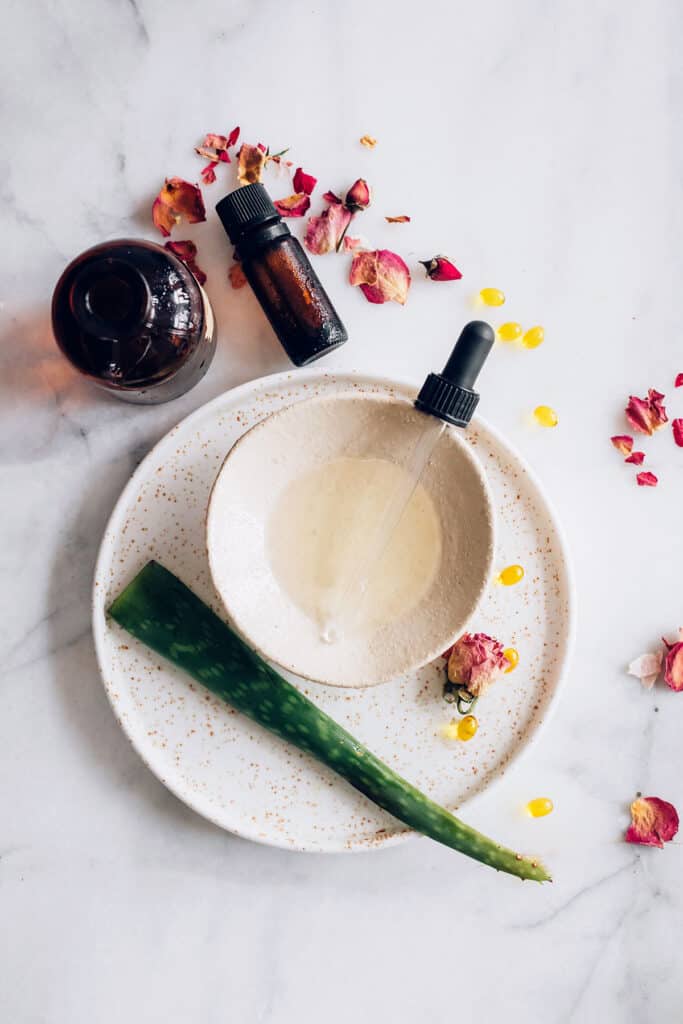If you’ve dealt with bouts of blackheads cropping up on your face—most often your nose—you know how pesky these little suckers can be. Rest assured, however, that they’re harmless and nothing more than clogged pores with oil and dead skin cells that have been exposed to the air, which is what makes them appear black!
They can show up on anyone, anywhere, but they’re most common on skin that’s prone to sweating and excess oil production, like the chin, nose, cheeks, chest, and back. If you’re looking for simple blackhead remedies, here are the best ways to tackle them to get clearer, more radiant-looking skin.
Meet the experts
Yoram Harth, M.D., dermatologist and Medical Director of MDacne
Marisa Garshick, M.D., a board-certified dermatologist at Medical Dermatology & Cosmetic Surgery (MDCS)
Brendan Camp, M.D., a board-certified dermatologist at MDCS Dermatology
Medically reviewed by Dr. Jennifer Haley, a board-certified dermatologist

First, what are pores?
Our skin is covered in pores, which are those little dots that represent tiny openings in our skin that we can see quite clearly if we look through a magnifying mirror. These are important, as they’re actually where hair follicles, oil glands, and sweat glands connect from the deep layers of the skin and open to the outside world. Sweat exits through these pores to help keep you cool when it’s hot outside.
As you age or are exposed to anything that damages the collagen and elastic tissue in your skin, these pores stretch out and appear larger. Larger pores tend to make you look older since products don’t apply smoothly, and makeup can appear heavier and blotchy on your face. While pore size is partially determined by genetics, there are some simple and clever solutions that can minimize their appearance.
What Are Blackheads?
Blackheads (open comedones) are a type of acne characterized by a dark bump in the hair follicle composed of excess oil and dead skin cells. “This mix of dead skin cells and dried sebum accumulates in the upper part of the skin glands and forms whiteheads and blackheads,” explains Yoram Harth, M.D., dermatologist and Medical Director of MDacne. “When the sebum comes in contact with the air, it oxidizes and changes its color to black, leading to blackheads.”
Blackheads don’t only appear on the face—they also can be found on the back, chest, neck, ears, and shoulders. And their name is a little deceptive since they can appear in a range of colors from yellow to black. When a blackhead is extracted, usually just the top of the blackhead is dark in color, which is the part that has had contact with the air and became oxidized. Beautiful, right?
Now that we know what a blackhead is, we can discuss the best way to remove and prevent them. Cleansing regularly—twice a day at least—can keep excess sebum (oil) and dirt to a minimum [source]. If you are an athlete, play sports, or work out, you’ll want to be sure to use a toner and cleanse after exercising.
How to Prevent Blackheads – 7 Dermatologist-Approved Methods
Once blackheads crop up, they can be pretty tough to get rid of without getting them extracted professionally. And because they’re so stubborn, prevention is often easier than treatment. Here are a few things you can do to prevent them from forming in the first place:

1. Wash your face regularly.
Cleansing your skin helps eliminate excess oil and buildup, explains Marisa Garshick, M.D., a board-certified dermatologist at Medical Dermatology & Cosmetic Surgery (MDCS) in New York. “It is always important to wash your face at nighttime, but many of those with oily skin also benefit from washing in the morning,” she says. “That said, it is important to avoid over-washing as this can strip the skin of its natural moisture and lead to increased oil production.”
2. Oil cleanse.
Washing your face with oil is a great way to remove oily buildup without drying out your skin. While adding oil may seem counterintuitive, just remember that water repels oil, often forcing it deeper into pores, while oil dissolves oil, carrying it and other impurities away.
Oil cleansing also moisturizes the skin, so your body doesn’t produce extra oil to compensate. Just make sure that you use a product labeled “noncomedogenic,” meaning it does not contribute to the formation of acne (comedones).
3. Use skincare with acne-fighting ingredients.
“The best products to reduce non-inflamed skin-colored bumps will be a combination of medicated cleanser and night treatment containing salicylic acid (BHA) or glycolic acid (AHA),” explains Dr. Harth. “The cleanser needs to have a concentration of at least 0.5% salicylic acid and the night cream 2% salicylic acid.”
Another great ingredient that helps with blackheads is retinol. Though retinol used to be prescription-only, it is now available over the counter in the form of adapalene. “It accelerates regular cell turnover and, in doing so, prevents the formation of blocked pores,” explains Brendan Camp, M.D., a Manhattan-based dermatologist at MDCS Dermatology. “Adapalene is especially helpful for whiteheads and blackheads and is best applied at night since it may make the skin sensitive to the sun.”
4. Don’t wear so much makeup.
Full-coverage concealer and foundation are notorious for clogging pores. I was skeptical about this until I tried reducing them myself, and it works. My skin improved drastically when I stopped wearing makeup every day and started letting my skin breathe a little.
If you do wear makeup, make sure that it’s noncomedogenic, meaning it won’t clog the pores. “When it comes to makeup, it is also important—regardless of what type of makeup is used—to wash makeup off before bed to minimize the potential for further clogged pores, breakouts, or skin irritation,” explains Dr. Garshick.
Also, be sure to remove your makeup at night so that it doesn’t contribute to the formation of whiteheads and blackheads. “Using an oil cleanser or micellar water before a regular cleanser at night can be helpful at removing any residue,” says Dr. Camp.
5. Apply pink clay masks.
“Pink clay masks absorb sebum from enlarged skin oil glands, thereby helping unclog the pores, reducing their size, and reducing the number of blackheads and whiteheads,” explains Dr. Harth. “Using blackhead strips or pink clay masks can extract the blackheads and oil, making pores look smaller.”
6. Exfoliate.
Exfoliating, either with a chemical or physical exfoliant, is also helpful for removing dead skin cells that can contribute to blocked pores, according to Dr. Camp. He recommends limiting your use of exfoliants to 2–3 times per week so as not to irritate your skin.
7. Keep pH balance in mind.
Our skin is naturally acidic. But when this acid mantle gets disturbed, it allows bacteria to flourish, which in turn causes inflammation, leading to blackheads and breakouts. Applying a slightly acidic toner to blackhead-prone areas can help keep breakouts away. To make your own toner, mix ¼ cup of raw apple cider vinegar with ½ cup of water and apply using a cotton ball twice a day.
How to Remove Blackheads
The recipes below can help with loosening a blackhead and may even help remove surface blackheads. However, if you try manual extractions at home, you’ll need to be familiar with some important dos and don’ts! Our esthetician, Deborah Harju, walks you through how to do it:
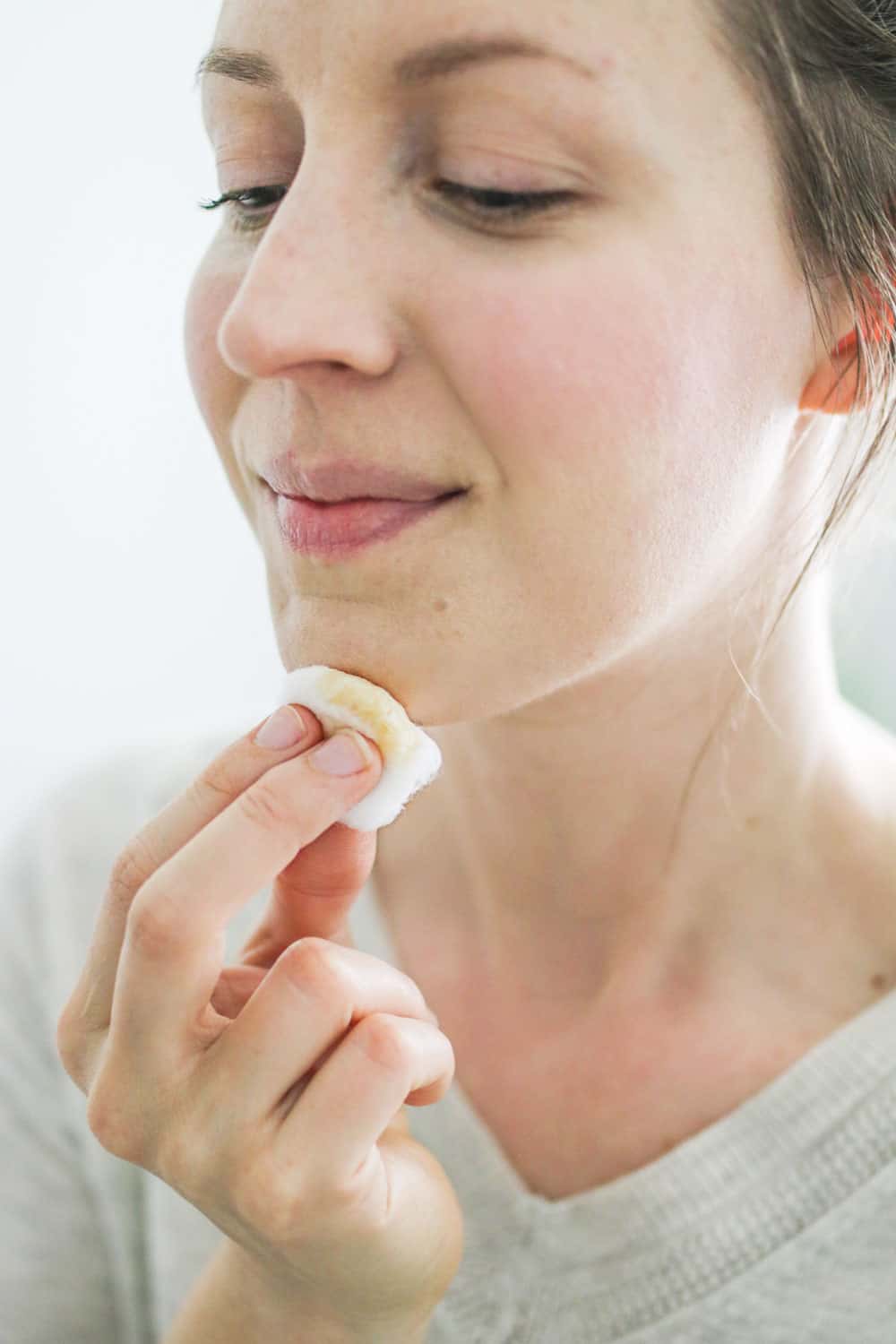
Blackhead Extraction Technique
Do:
Always wash your face prior to attempting to remove a blackhead.
Then steam your face in a nice hot shower or with a portable steamer for 10–15 minutes to open the pores. Never try to extract blackheads without warming the pores first, or you will end up with unnecessary inflammation and possible scarring.
Wrap your fingers with enough tissue that you no longer feel your nails through the tissue.
Gently squeeze the sides of the blackhead in an inward and upward motion, in brief, short spurts—not long, drawn-out sessions.
Or look for a medical-grade comedone extractor. These are made to apply even pressure in a downward motion to extract the comedone. If you are leaving marks on your skin, the blackhead is not ready to come out.
Don’t:
Force anything to come out of any pore, and especially avoid pushing so hard you tear the skin or draw blood.
Leave any marks. If you see nail indentations on the skin, you need more tissue on your fingertips to pad them.
Work on unclean skin, as you can spread bacteria and cause more acne.
Try to remove a blackhead that you can’t see (such as on the side of your face). It’s very important to be able to see the blackhead you are trying to remove, so that you can prevent damage to the surrounding skin.
Blackhead Remedy Skincare Regimen
If you cleanse, exfoliate, and tone as advised by your board-certified dermatologist, your skin will be better equipped to prevent the formation of those jumbo pores.
Note that if you experience inflammatory and/or hormonal acne that remains persistent, it is important to consult a dermatologist for the management of your particular type of acne.
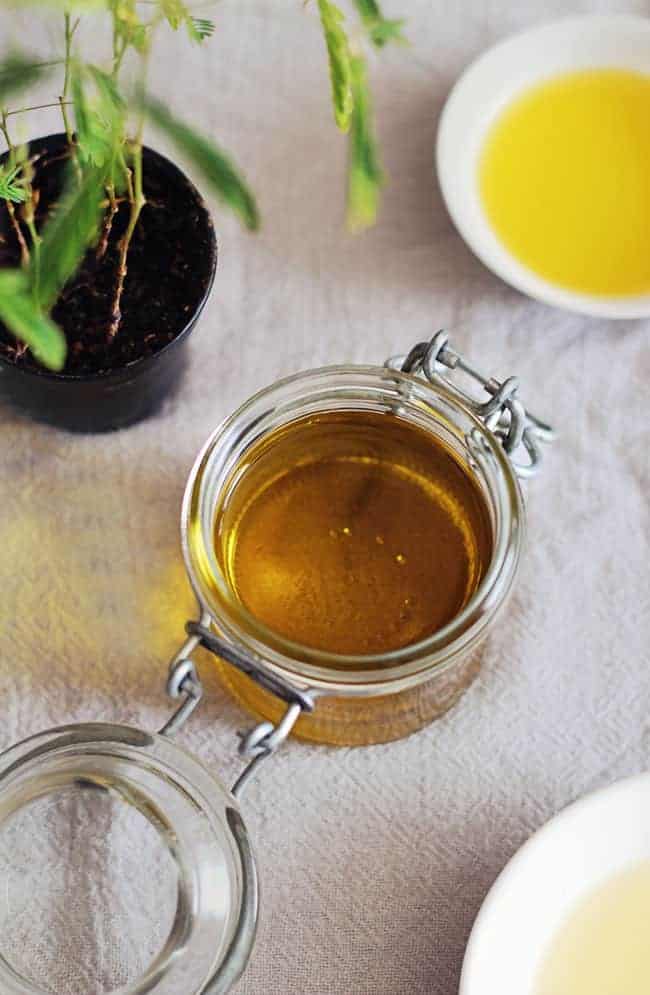
1. Use an oil cleanser for blackhead-prone skin.
While it’s true that blackheads and oily skin go hand in hand, washing your face too often can actually make the problem worse [source]. Stripping the skin of much-needed moisture causes the body to compensate by producing more oil, not less.
And more oil leads to more clogged pores. It’s the ultimate catch-22.
One solution is cleansing your face with oil. Oil traps the dirt, makeup, sebum, and other “bad oils” on the skin’s surface and washes them away. You’ll lose the dirt and excess oil without drying out the skin like alcohol-based, drying traditional cleansers can.
Use an oil that complements your skin type. This guide to the best oils for the skin can help determine the type of oil that’s right for you. Here is a recipe with jojoba and tamanu oil that is a great choice for oily skin.
Blackhead Oil Cleanser
-3 parts jojoba oil
-1 part tamanu oil
-9 drops frankincense essential oil – per 2-ounce container
The ratio is 3 parts jojoba oil to 1 part tamanu oil. For every 2 ounces of oil, you will add 9 drops of frankincense essential oil, which has anti-inflammatory effects, is used in wound healing, and helps to prevent scar formation [source].
Tamanu oil is known to be an antioxidant and has antimicrobial action when used on the skin [source]. You can also use tea tree or chamomile essential oils as they are both antibacterial and anti-inflammatory [source].
Shake before each use and gently press into the forehead, T-zone area, cheeks, and chin. Rub gently in circular motions and then leave on for 1 to 2 minutes.
Next, remove with a warm, wet washcloth. And lastly, do a final rinse with warm water. This can also be used without the frankincense to break down eye and face makeup. Follow with an appropriate facial oil or moisturizer.
2. Exfoliate to unclog pores.
When used correctly, baking soda polishes away blackheads and keeps pores clear without irritating sensitive skin. Use baking soda to gently scrub the areas with clogged pores and blackheads.
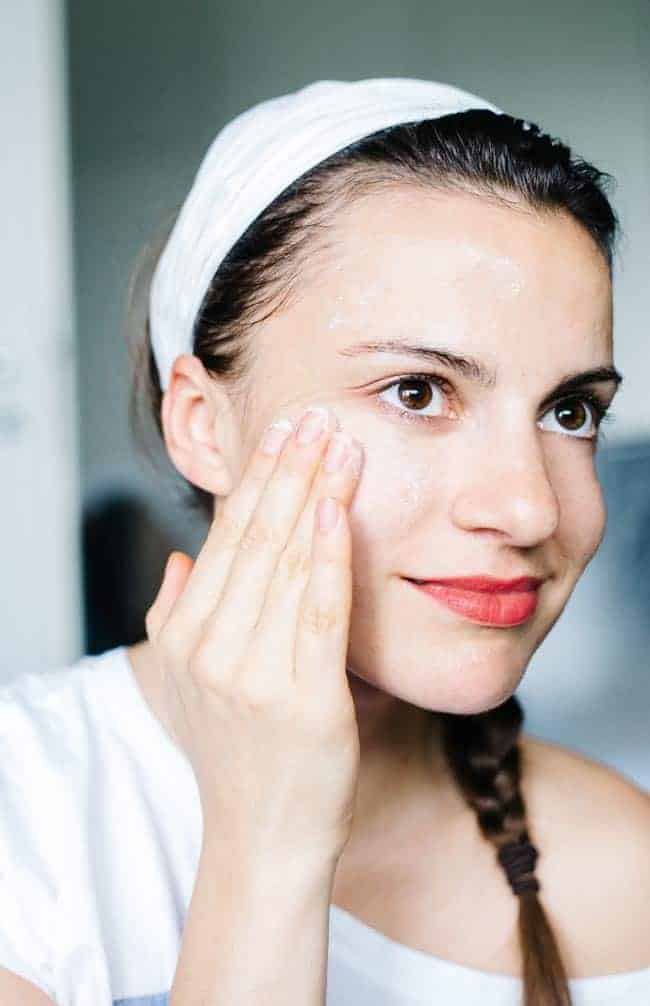
Baking Soda Scrub
-2 tablespoons baking soda
-2 tablespoons cultured plain yogurt or buttermilk
Combine the baking soda and yogurt in a bowl, and then gently scrub the areas with clogged pores and blackheads. Apply gentle pressure in a circular motion with your fingertips.
If you allow this scrub to partially dry, it becomes more of a gommage (exfoliant) that you can gently massage in circular motions with your fingertips. Then remove the excess with warm water.
Yogurt and Nutmeg Scrub
Apply a mixture of 2 tablespoons of cultured plain yogurt and 1 teaspoon of ground nutmeg to blackheads and massage gently using your fingertips. The lactic acid in yogurt or buttermilk helps break down dead skin cells so you can rinse them away, and the fermentation forms probiotics that have been shown to benefit skin health [source]. The nutmeg absorbs oil and gently scrubs away dirt and grime, leaving behind radiantly smooth skin.
Or try a chemical exfoliant.
Find one containing salicylic acid, which gently breaks down dead skin cells, sebum, and dirt—all of which cause pores to stretch. I prefer salicylic acid, as this beta-hydroxy acid is specifically attracted to oil, works as a keratolytic (breaks apart oily dead stuck skin cells), and also has anti-inflammatory properties (think: aspirin).
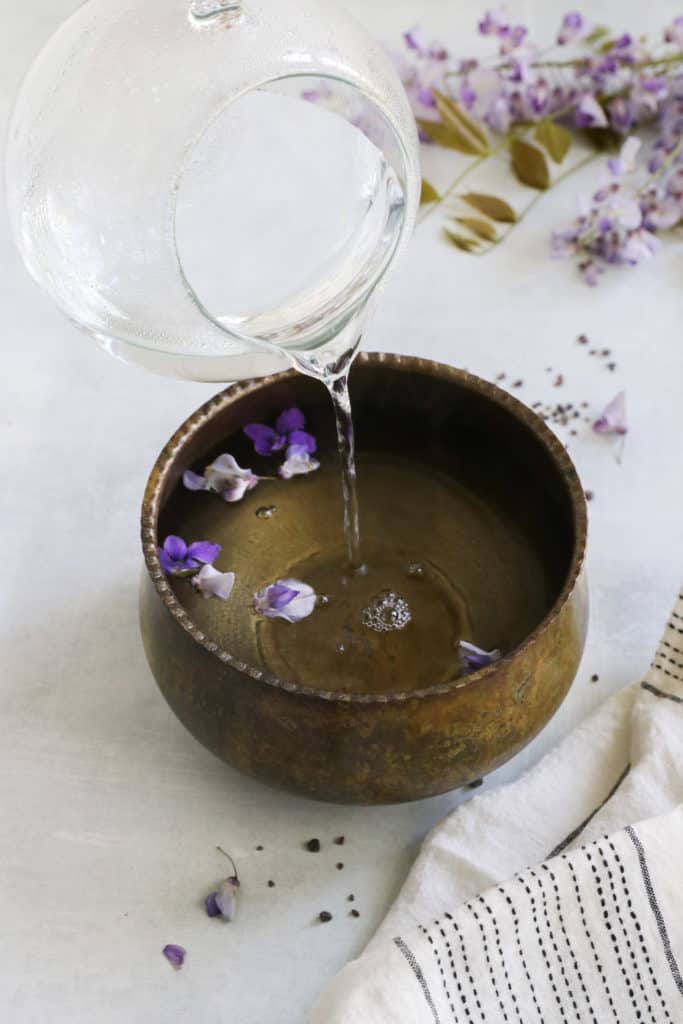
3. Steam open your pores.
A facial steam helps soften blackheads and dead skin cells so they can be removed more easily. Pour piping hot water into a shallow bowl. Place a towel over your head and lean over the bowl so that your face is about 12 inches from the water.
Allow the steam to sink into pores for roughly 5 minutes. Gently pat your face dry, then attempt to remove blackheads carefully with a blackhead extractor, pore strips, or any other method you choose.
4. Apply a treatment face mask to clean out your pores.
Wherever you find blackheads, you’ll also find oil production on overdrive. Bentonite clay is an old-time remedy that works by absorbing dirt, oil, and impurities from deep within pores and carrying them away. It is packed with minerals and also has antibacterial properties [source].
Because bentonite clay can be somewhat drying, it’s best if you only do a full treatment once a week. For especially troubled skin, you can use it as a spot treatment twice a week and as a blackhead remedy, but be sure to take a break if you see any redness or peeling developing.
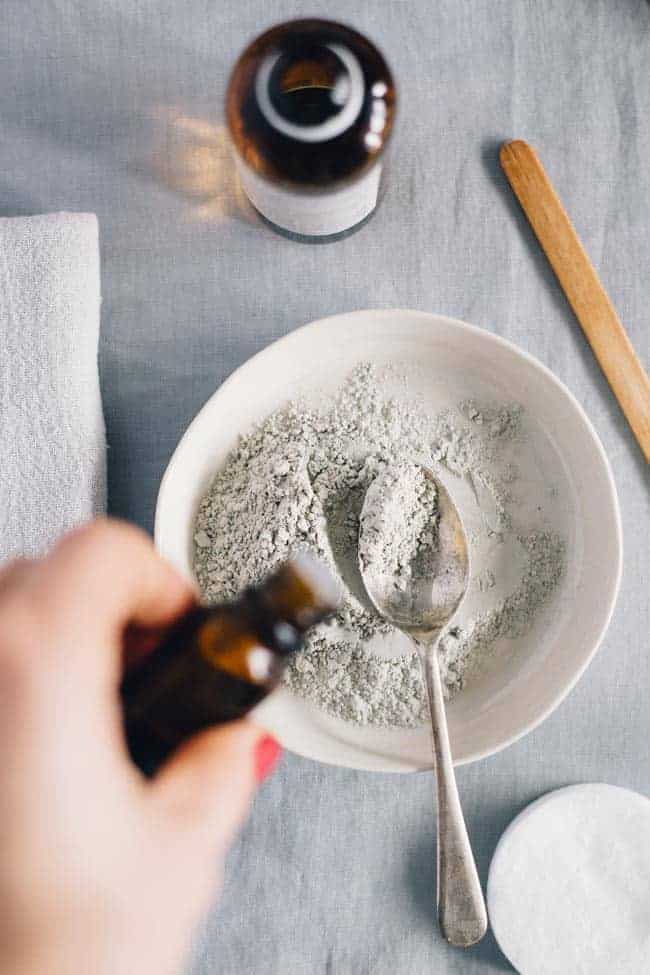
Clay Cleansing Mask for Blackheads
Use a deep cleansing mask one to two times a week to prevent oil from accumulating in your pores. This simple two-ingredient mask is designed to draw impurities out of the pores.
Most clay masks dry taut; you will feel a bit of pulling on the surface of the skin, which is normal.
Mix the clay (Bentonite or Moroccan Red Clay are ideal for battling blackheads) and witch hazel or apple cider vinegar in a small bowl and apply to the affected area with a facial brush. Leave the mask on until it’s dry, and then rinse your face with warm water.
-1 teaspoon clay
-1 teaspoon witch hazel (we like Thayer’s) or raw, organic apple cider vinegar
Egg White DIY Pore Remover
Egg whites can remove blackheads just like store-bought pore strips, but they are much, much cheaper. Take an egg and separate the yolk from the whites. Pour the whites into a bowl and beat them slightly with a fork.
Then take a small piece of tissue and dip it in the egg white until it’s completely saturated. Lay it on top of the blackheads and let dry for 15 minutes. Using both hands, gently pull off the strip and, hopefully, the blackheads along with it.
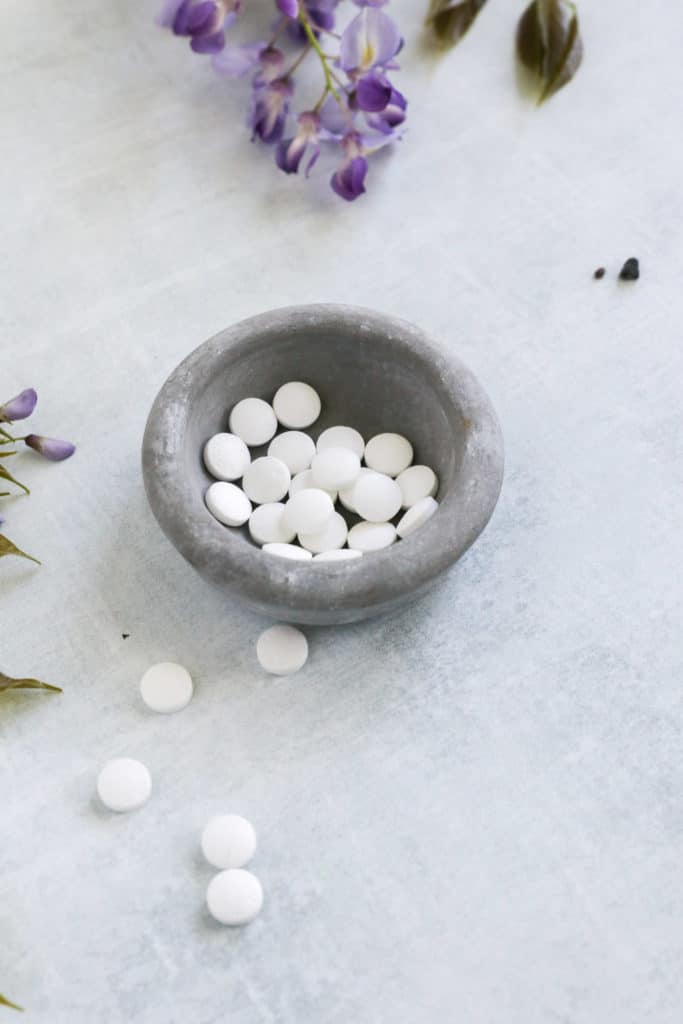
Aspirin Face Mask
The main ingredient in aspirin, salicylic acid, is commonly used as a topical acne treatment. It sinks into pores, helping to break down blackheads quickly. Simply crush an aspirin tablet using the back of a spoon and mix it with a few drops of water to make a paste. Apply it to blackheads and let sit for 15 minutes, then rinse off.
5. Close pores with a toner.
Apple cider vinegar works by restoring your skin’s pH balance, removing dead skin cells, and rinsing away other impurities that can cause clogged pores. To use as a spot treatment, simply pour raw ACV on a cotton ball and dab it onto the affected area.
For use on the entire face, combine ¼ cup of apple cider vinegar with ½ cup of water and apply twice daily. Let dry completely without rinsing.
6. Use a lightweight serum.
Use a noncomedogenic serum both in the morning under your makeup and at nighttime with a clean face. This organic and botanical serum offers a multitude of benefits. A serum with aloe vera can help reduce any sort of inflammation from acne or redness, and it also cuts through clogged pores to reveal healthier skin underneath.
Or try a face serum that’s made with naturally-derived ingredients. Here are our favorite picks for every skin type.
7. Apply a moisturizer with acne-fighting ingredients.
When you are acne-prone, you need to set your skin up for success by utilizing the best ingredients for your type of skin. Since major zits can leave your pores appearing wider, ensuring you remove the dead skin cells and balance your oil production will make a huge difference. A moisturizer with salicylic acid will help keep your pores clean and fresh.
You should also look for brands that feature glycolic acid, which rids the skin of dead cells before they get trapped in your pores, thus revealing fresh new skin with normal-sized pores. If you’re inching toward your late 20s, use a retinol formula or products rich in antioxidants, which will naturally remove dead skin cells and boost collagen production, thus decreasing your pore size over time.
Some other things you want to look for when choosing a moisturizer for acne-prone skin are: anything oil-free, lightweight, and noncomedogenic to avoid clogging your pores.
8. Don’t skip sunscreen.
You already know how important it is to guard your delicate skin against harmful UV rays by applying sunscreen every day—no matter the season or weather forecast. But this non-negotiable step in your beauty routine has another bonus.
Our skin and all of its many structures are supported by collagen and elastin. The more support our skin gets—via cleansing, exfoliating, and protecting—the smaller and less misshapen our pores look.
Sunscreen helps to protect these structural components of the skin from damaging UV radiation, so your pores remain the size they were meant to be.
More Blackhead Remedy Ideas
Try one of these DIY blackhead-busting face masks or one of our favorite store-bought pore-shrinking products. This homemade carbonated clay mask is also a fun way to give your pores a deep cleanse!
This post was medically reviewed by Dr. Jennifer Haley, a board-certified dermatologist with extensive experience in medical, cosmetic, and surgical dermatology. Learn more about Hello Glow’s medical reviewers here. As always, this is not personal medical advice, and we recommend that you talk with your doctor.
97
Source by helloglow.co
